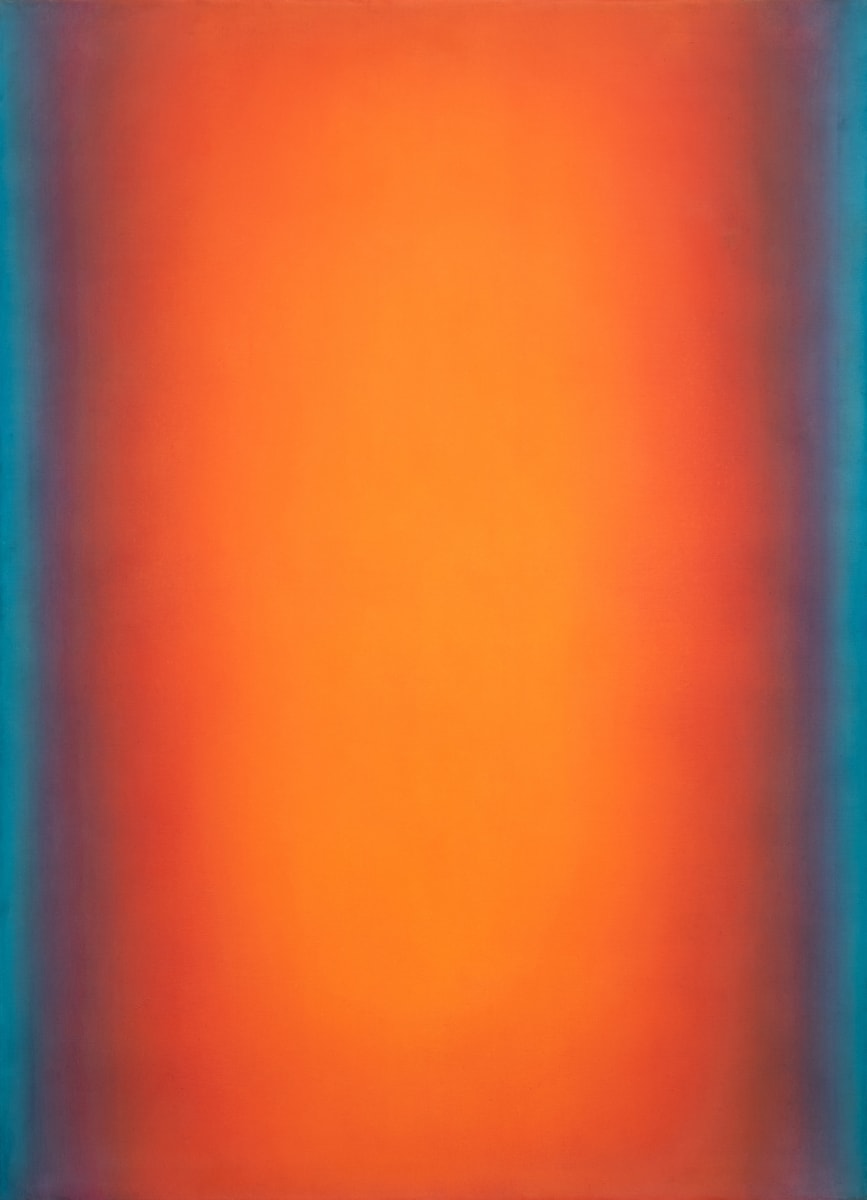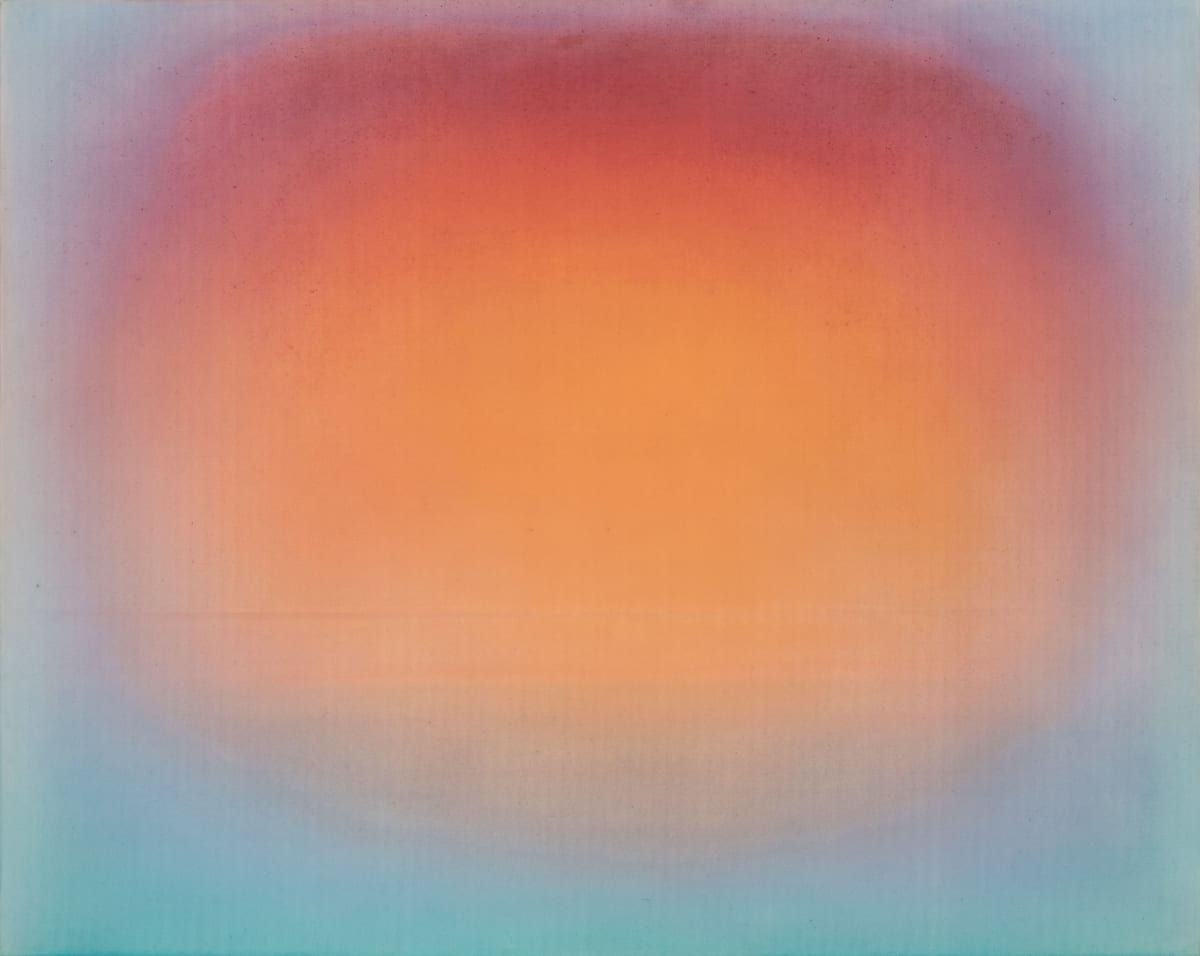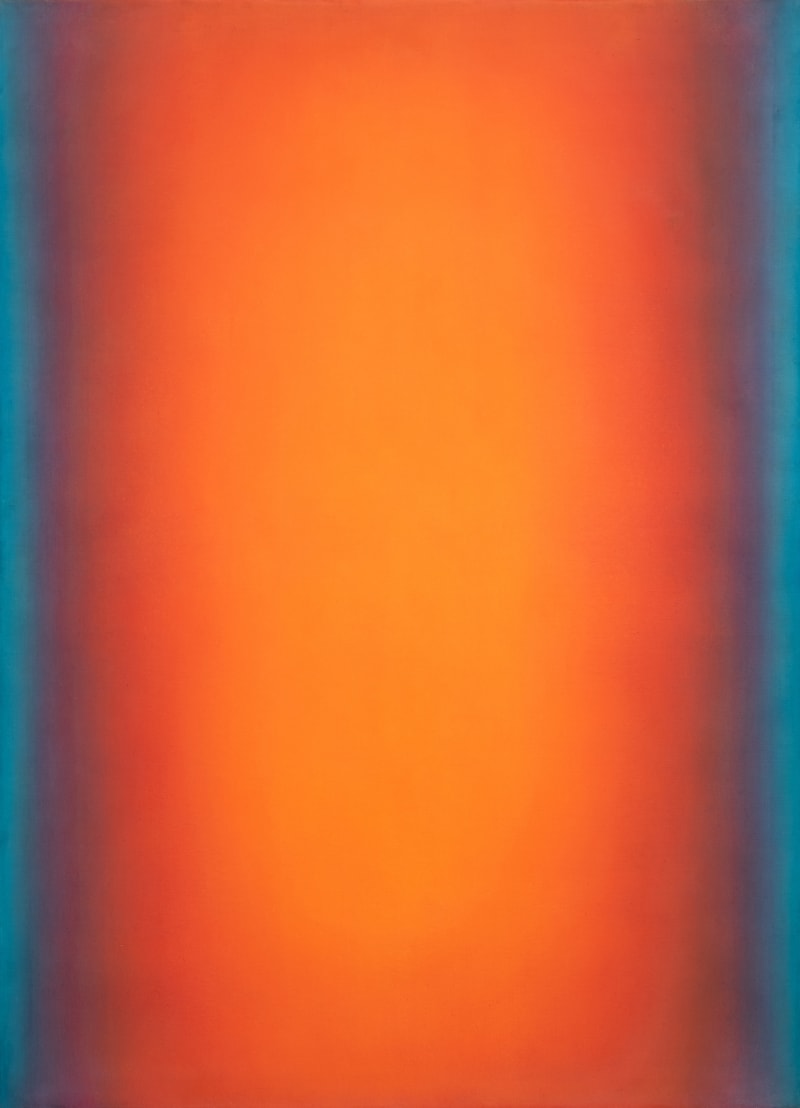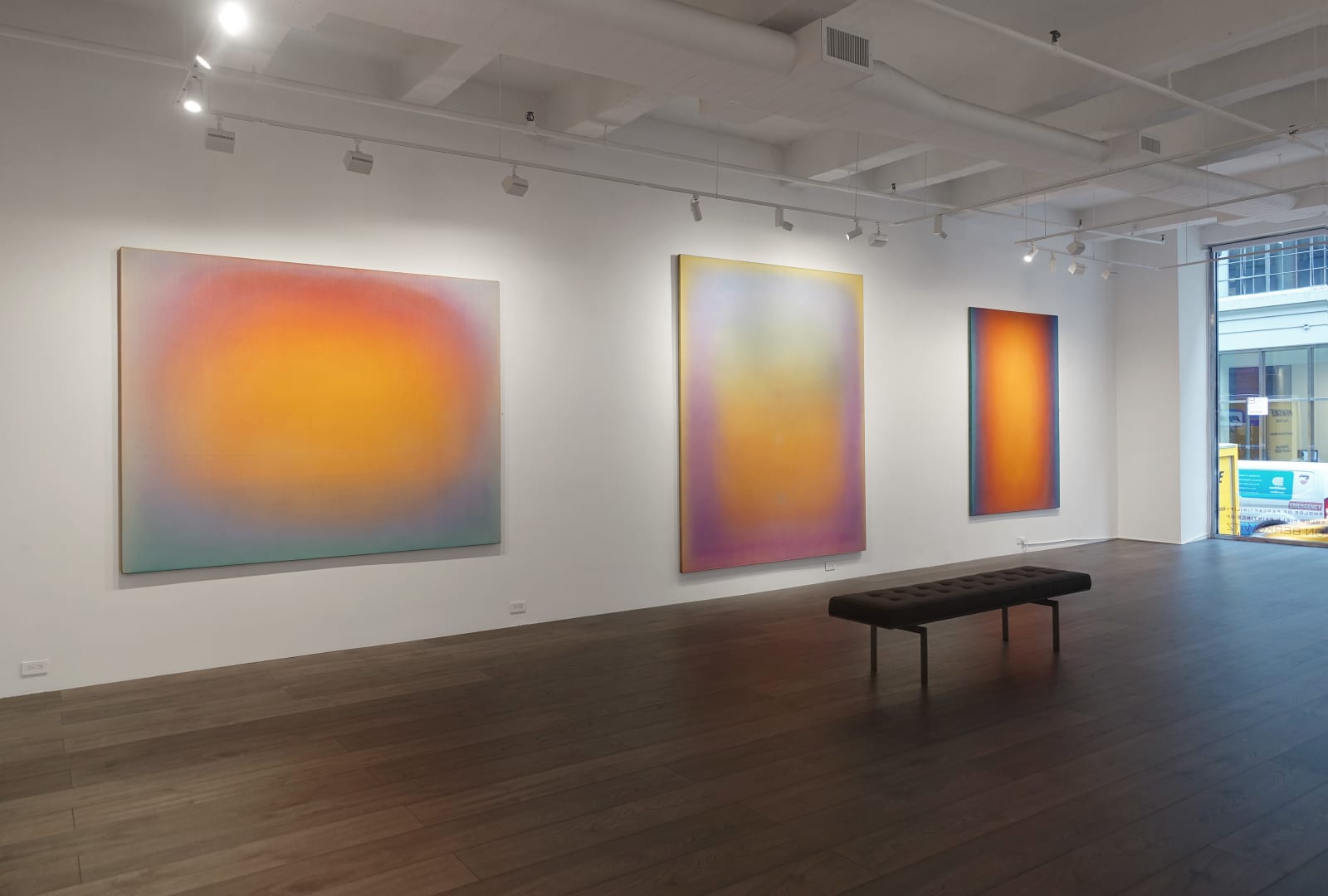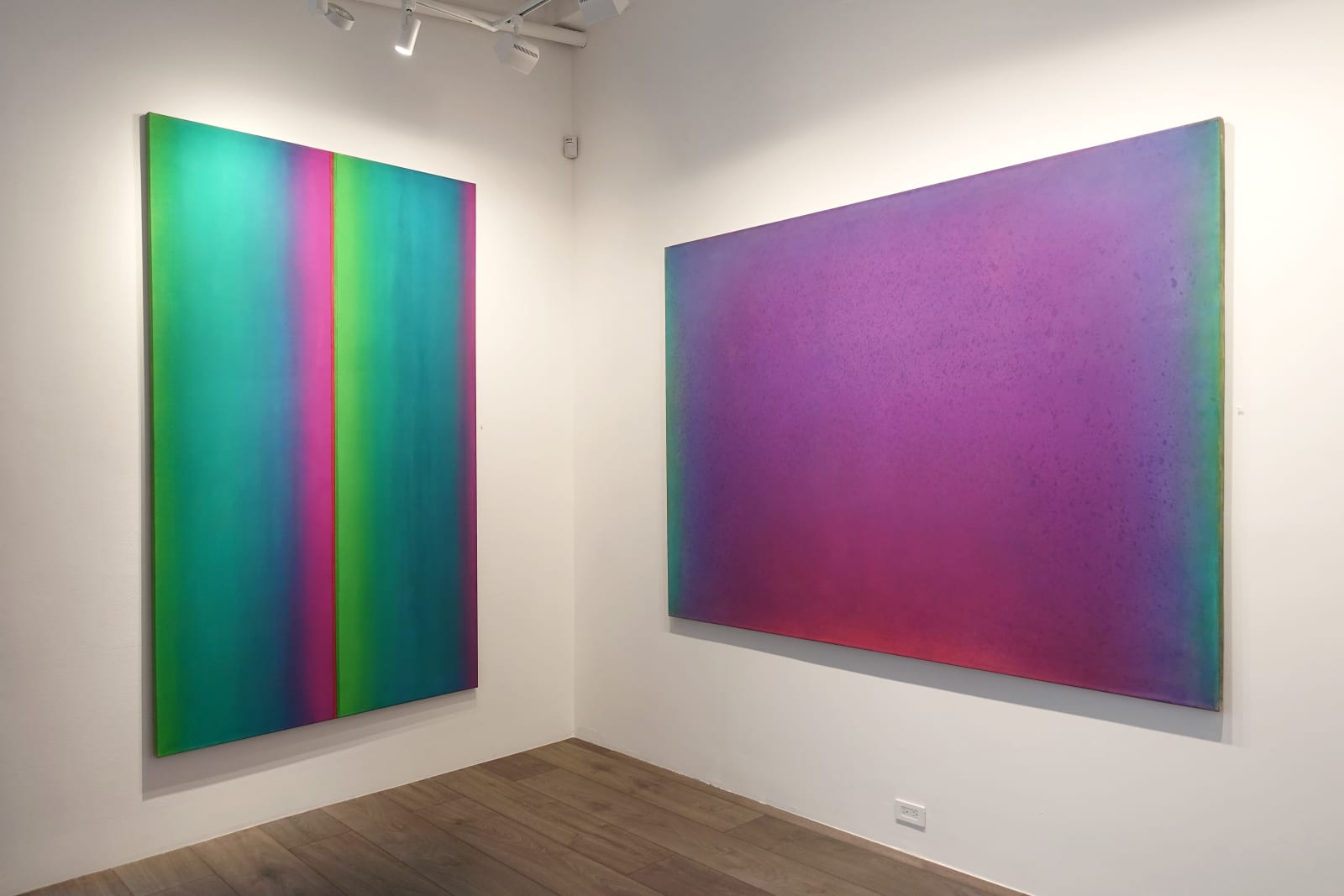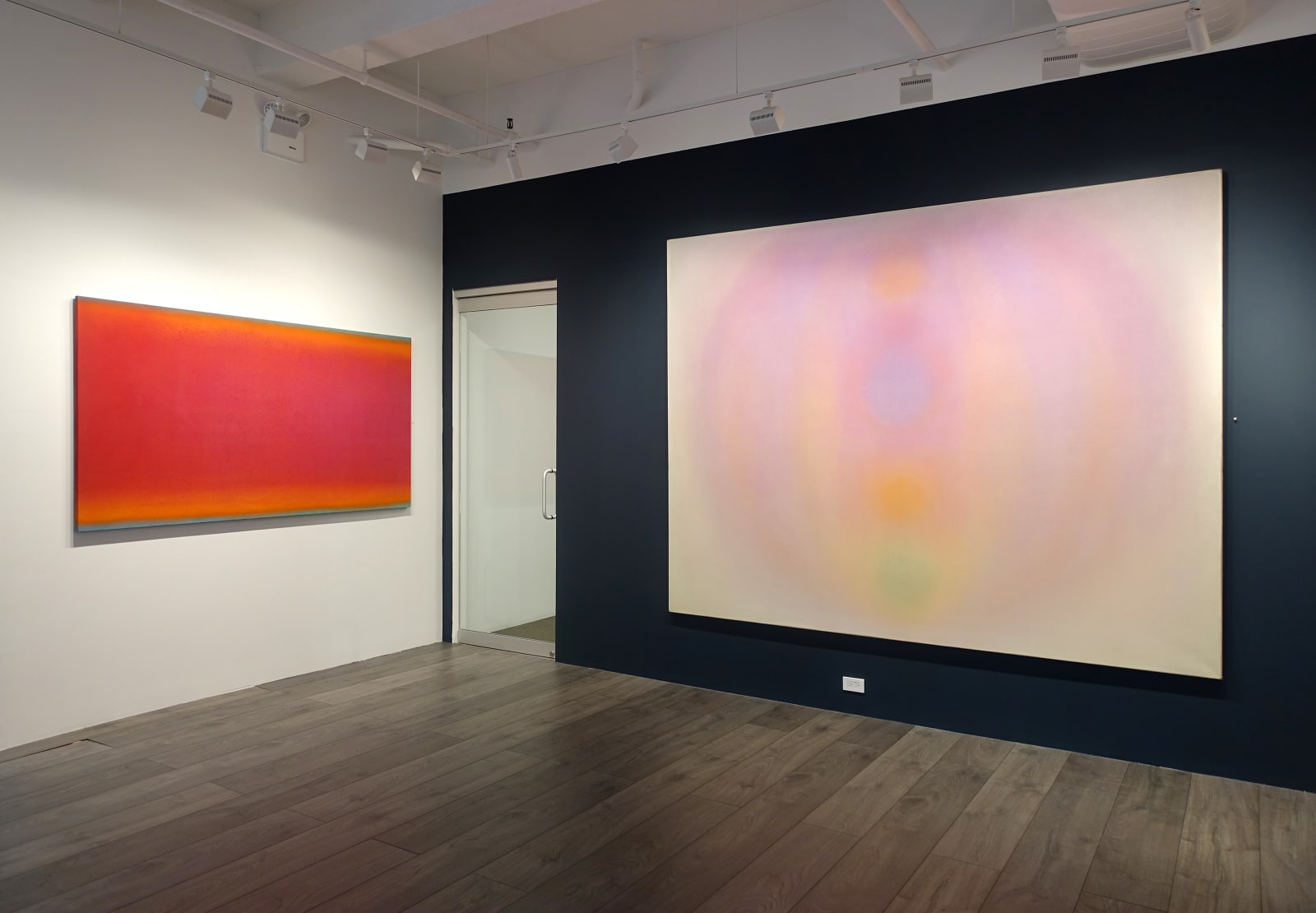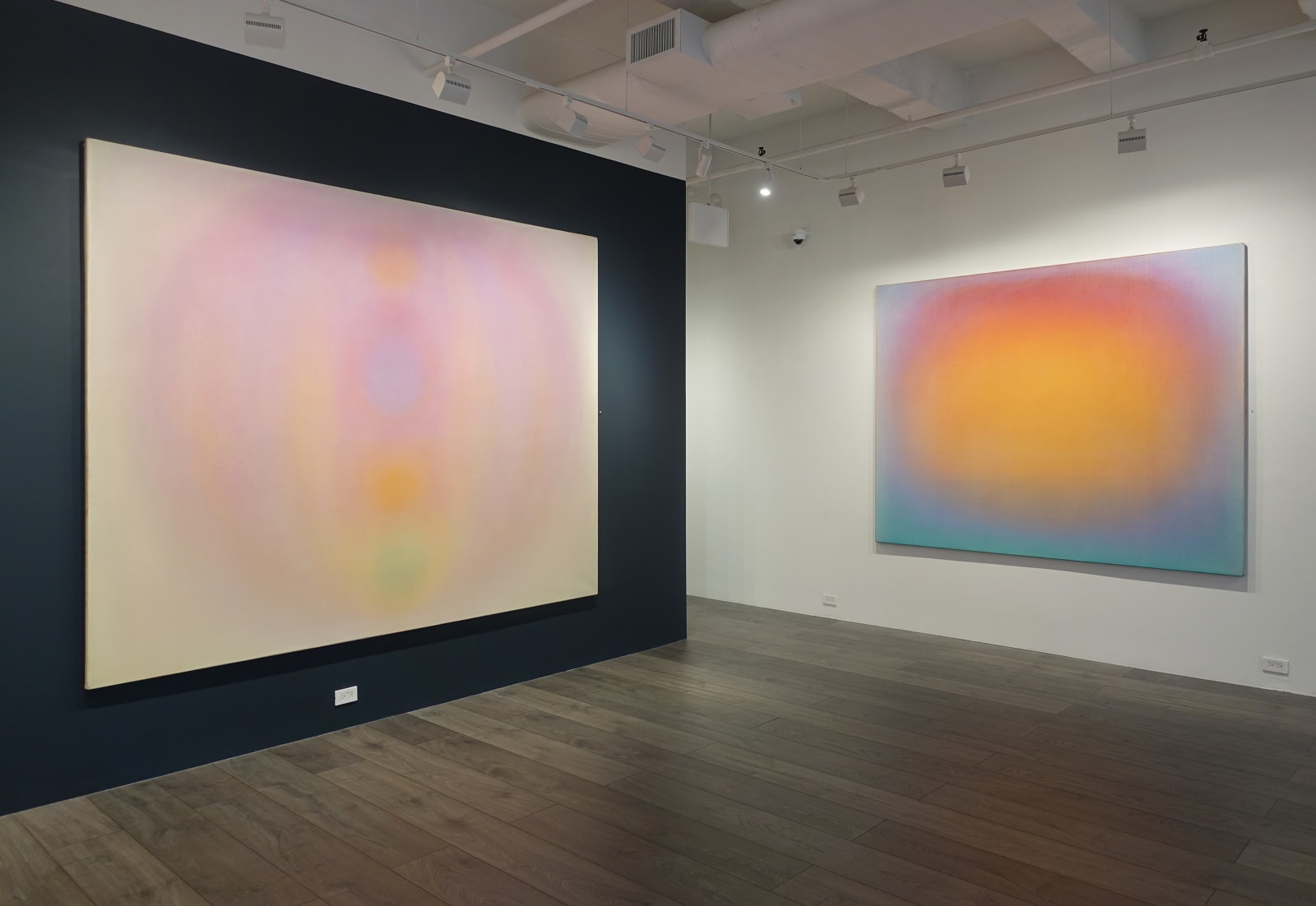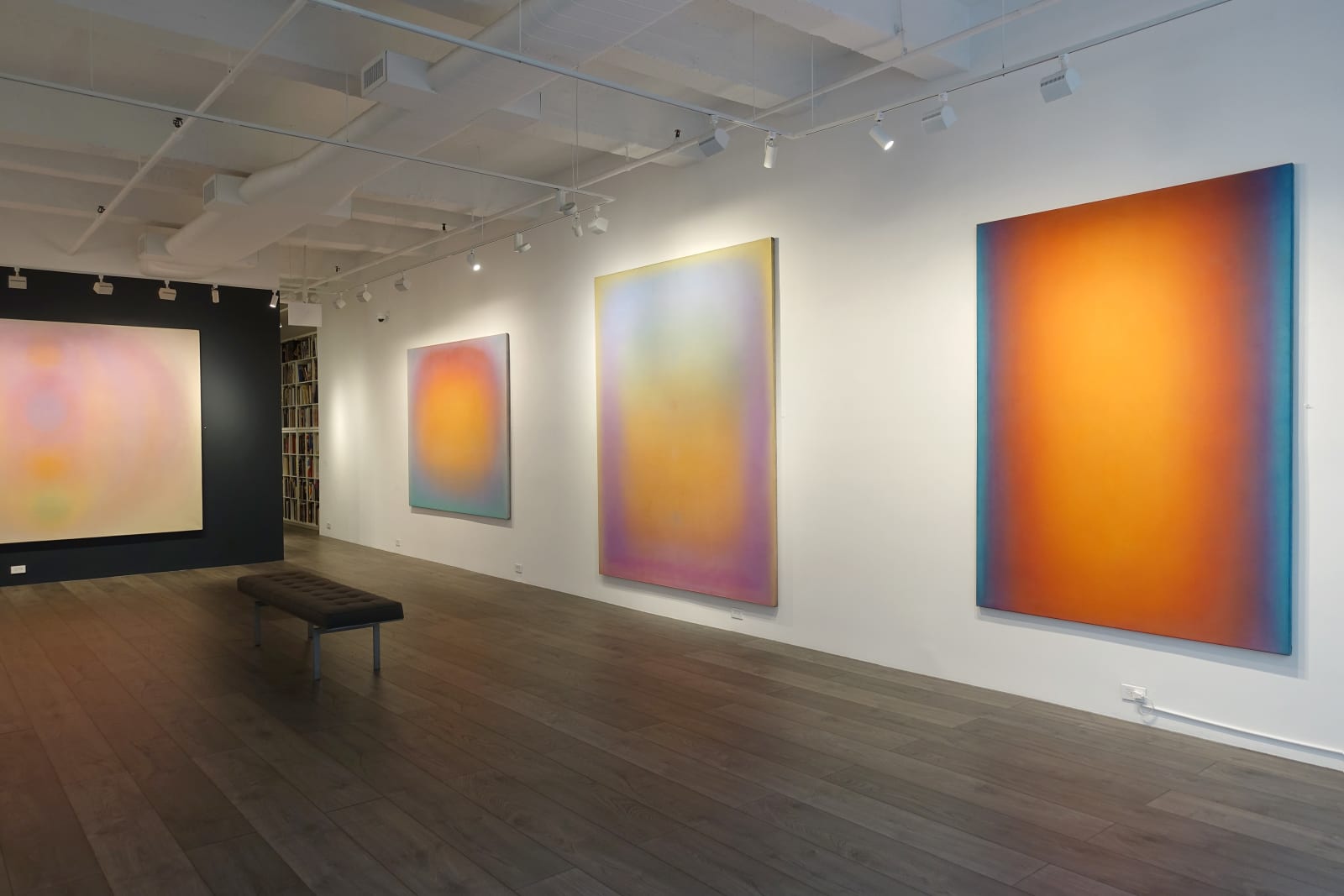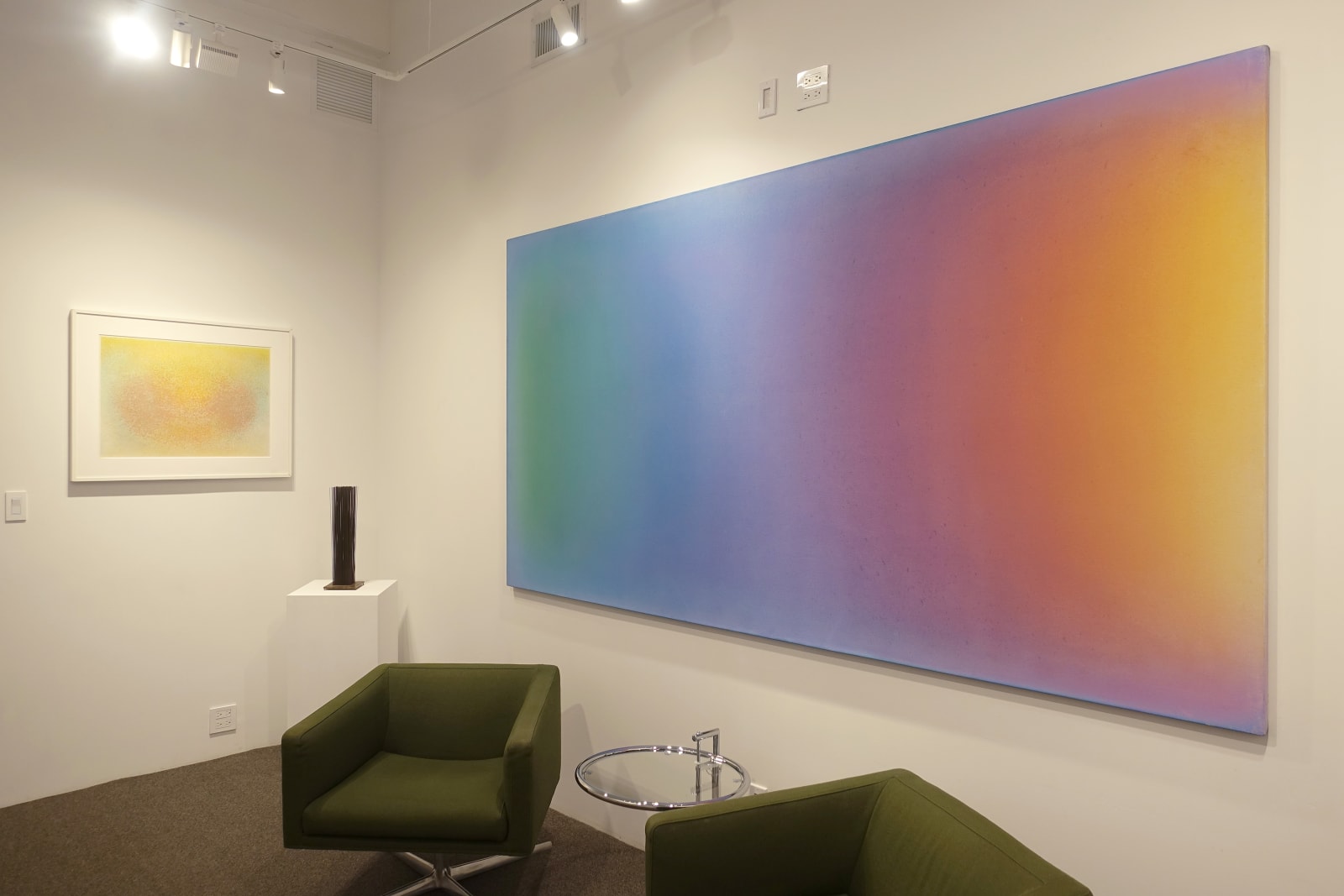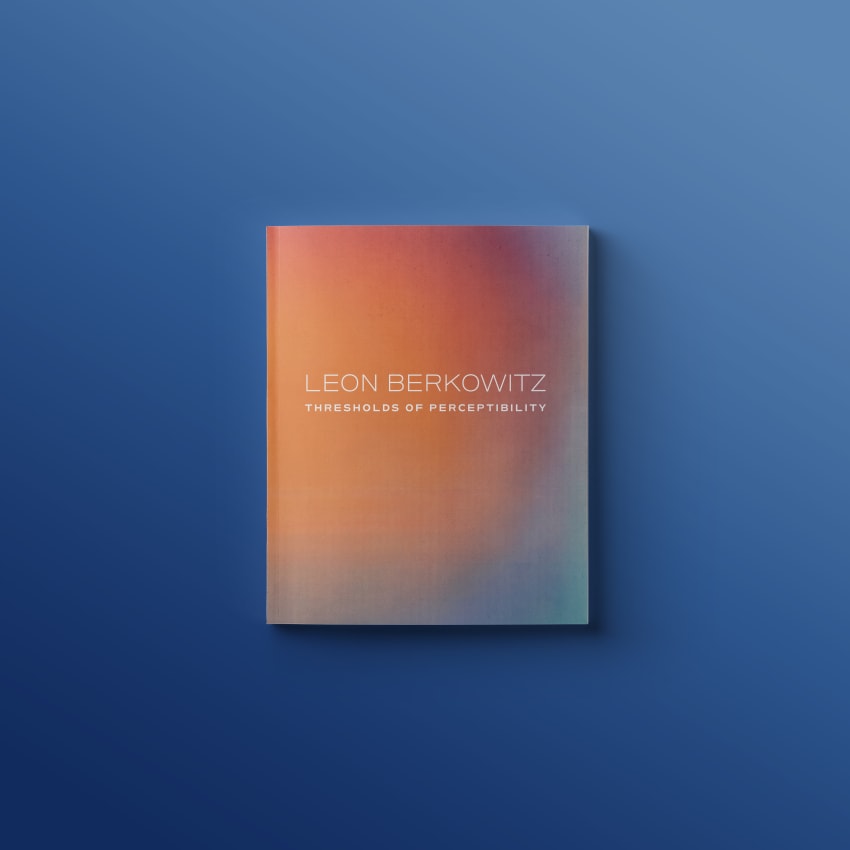
His singular use of color to evoke the sensation and poetic experience of light is best encapsulated in his large-scale paintings of the 1970s and 1980s.
Hollis Taggart will open Thresholds of Perceptibility: The Color Field Paintings of Leon Berkowitz, marking the gallery's first solo presentation of the artist's work since it took on exclusive representation of his estate in February 2019. Berkowitz, a contemporary of Willem de Kooning, Morris Louis, and Kenneth Noland, is best known for his brilliant and luminous articulation of natural light on the surfaces of his canvas. His singular use of color to evoke the sensation and poetic experience of light is best encapsulated in his large-scale paintings of the 1970s and 1980s. For Thresholds of Perceptibility, Hollis Taggart will present approximately a dozen of Berkowitz's paintings from these decades, including several canvases that measure almost nine feet. Together, these stunning paintings draw the viewer into Berkowitz's magnificent fields of color, which seem to vibrate with energy. The exhibition is accompanied by an essay examining the development of Berkowitz's distinct style and approach, written by the art historian Jason Rosenfeld, Distinguished Chair and Professor of Art History at Marymount Manhattan College. Thresholds of Perceptibility will remain on view through November 2, 2019 at the gallery's location at 521 W. 26th Street. The gallery will host a panel discussion on Berkowitz's work...
Hollis Taggart will open Thresholds of Perceptibility: The Color Field Paintings of Leon Berkowitz, marking the gallery's first solo presentation of the artist's work since it took on exclusive representation of his estate in February 2019. Berkowitz, a contemporary of Willem de Kooning, Morris Louis, and Kenneth Noland, is best known for his brilliant and luminous articulation of natural light on the surfaces of his canvas. His singular use of color to evoke the sensation and poetic experience of light is best encapsulated in his large-scale paintings of the 1970s and 1980s. For Thresholds of Perceptibility, Hollis Taggart will present approximately a dozen of Berkowitz's paintings from these decades, including several canvases that measure almost nine feet. Together, these stunning paintings draw the viewer into Berkowitz's magnificent fields of color, which seem to vibrate with energy. The exhibition is accompanied by an essay examining the development of Berkowitz's distinct style and approach, written by the art historian Jason Rosenfeld, Distinguished Chair and Professor of Art History at Marymount Manhattan College. Thresholds of Perceptibility will remain on view through November 2, 2019 at the gallery's location at 521 W. 26th Street. The gallery will host a panel discussion on Berkowitz's work on October 19, moderated by Rosenfeld.
Although Berkowitz (1911-1987) is most frequently associated with Washington, D.C., where he spent most of his life, he received his education across a wide range of institutions, including the University of Pennsylvania in Philadelphia, the Art Students League in New York, and academies in Paris, Florence, and Mexico City. In 1947, Berkowitz and his wife, the German-American poet Ida Fox, established the Washington Workshop Center for the Arts, which became an important platform for creative production and dialogue across the visual and performing arts in the D.C. area. The Center brought together acclaimed and emerging artists from Washington, New York, and other locales, and promoted Washington, D.C., as a site for important artistic production. Through its participants the Center became closely associated with the development of the Washington Color School, an extension of Abstract Expressionist Color Field Painting, which had been made famous in New York by artists such as Mark Rothko and Barnett Newman.
Although he played a pivotal role in cultivating the careers of the founders of the group, Berkowitz would, throughout his own career, eschew the positioning of his work within the Washington Color School movement, resisting its formal investigations in favor of more poetic and spiritual evocations of color and light. Berkowitz moved abroad to Spain in 1954, and he would spend the next decade living and traveling in Europe. It was during this time that he cemented his commitment to conveying the emotional, psychological, and physical experience of light, inspired by his own experiences painting in the open air. After producing works that delved into geometric abstraction in the 1960s, by the early 1970s he developed a signature style, in works characterized by both vibrant fields of color and subtle and nearly imperceptible transitions between hues. In the last two decades of his life he would produce his most powerful and stylistically individuated work.
Berkowitz developed a technique entirely his own, painting with a mixture made of 10% oil paint and 90% turpentine. He would paint the surface of the canvas with this pigmented wash, dry it with rags and blow-dryers, and then repeat the process, sometimes up to 40 times. This allowed him to eliminate any distinguishing lines or boundaries between his colors, leaving only a gradual expansion of tone that seemed to extend beyond the canvas itself and conveyed a slow, developing glow. To further control the placement and impact of the color, Berkowitz often lined his canvases with tissue paper, ensuring a controlled buildup of the desired hues.
Berkowitz's fascination with the translation of perceived light not only connects him to the Color Field painters in Abstract Expressionism, but also to the effects sought by artists associated with California's Light and Space Movement, such as James Turrell and Doug Wheeler. Indeed, his canvases exude a captivating luminescence that seems to emanate from deep within, enveloping viewers. With Thresholds of Perceptibility, Hollis Taggart reintroduces audiences to Berkowitz's practice and invites further exploration of an artist who, throughout his life, pursued his own artistic vision, one that addressed but also extended beyond the popular artistic dialogues and modes of the time. Equally, it invites viewers to immerse themselves in the meditative beauty of his work.
-
Throughout his career, Berkowitz participated in a wide range of solo and group exhibitions, including those at the Baltimore Museum of Art, Chicago Arts Club, Corcoran Gallery of Art, Hirshhorn Museum and Sculpture Garden, Phillips Collection, and Ringling Museum in Sarasota, Florida, among others. His work is held in the collections of the Museum of Modern Art in New York, High Museum of Art in Atlanta, and the Wadsworth Atheneum in Hartford, Connecticut, among numerous others. In addition to his own practice, Berkowitz was a well-recognized teacher. He served as the chairman of the painting department at The Corcoran Gallery's School of Art, where he taught for nearly twenty years until his death in 1987.
About Hollis Taggart
Founded in 1979, Hollis Taggart-formerly known as Hollis Taggart Galleries-presents significant works of American art showcasing the trajectory of American art movements from the Hudson River School to American Modernism and the Post-War and Contemporary eras. Its program is characterized by a deep commitment to scholarship and bringing to the fore the work of under-recognized artists. The gallery has sponsored several catalogue raisonné projects, most recently for the American Surrealist artist Kay Sage, and has been instrumental in advancing knowledge of such compelling artists as Alfred Maurer, Arthur B. Carles, and more recently, Theodoros Stamos, Marjorie Strider and Michael (Corinne) West. In the summer of 2019, the gallery announced the formal expansion of its primary market business and focus on the presentation of contemporary work, operating under Hollis Taggart, Contemporary. The gallery has a public space on W. 26th Street, which serves as its flagship, and a private viewing and storage facility on the same street. With 40 years of experience, Hollis Taggart is widely recognized by collectors and curators for its leadership, expertise, and openness, on matters of art history, and market trends and opportunities.
For more information about Thresholds of Perceptibility: The Color Field Paintings of Leon Berkowitz, please contact us at info@hollistaggart.com or +1 212.628.4000. For press inquiries, please contact Alina Sumajin, PAVE Communications & Consulting at alina@paveconsult.com, 646.369.2050.









